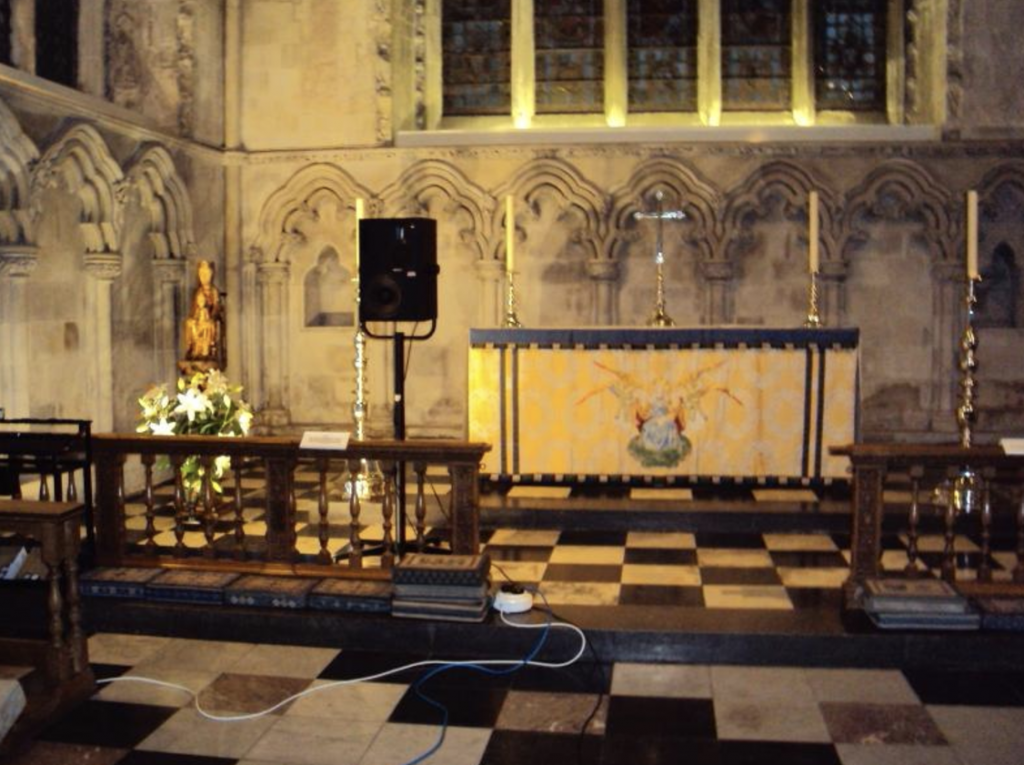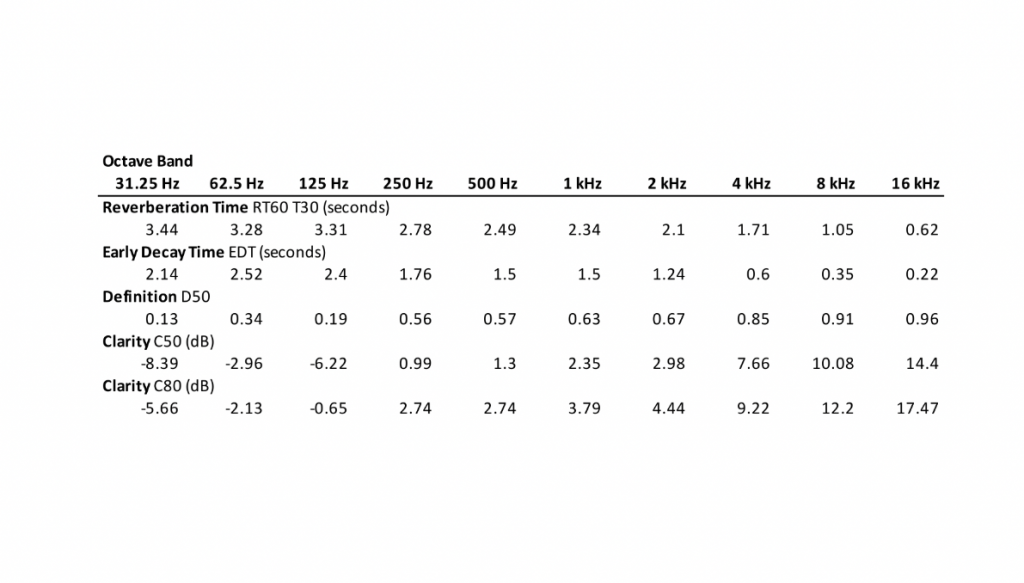My initial brainstorm into how I should present my idea of ‘re-contextualising’ early Christian church architecture sonic characteristics lead me down a few different paths with a few different methods. I could just record audio of liturgical practices in these spaces but this made me feel a bit lost about presenting this in a contemporary art environment; it felt a bit preachy to simply do this. I also didn’t want to take too much influence / inspiration from Bill Fontana. I think the way in which he recorded and re-interpreted recordings of the Thames was really tasteful and I couldn’t think of a way where I could achieve that same level of clarity in an installation as him.
After some more brainstorming I had a thought about using impulse responses. Whilst I had no experience in really using impulse responses or convolution reverb, aside from some very undirected experimentation with convolution reverb plugins before I really knew their use, I knew that they were a great way of capturing the unique architectural and sonic characteristics of a space. I figured that I could then record anything I wanted, but use specific impulse responses in order to create an installation that pays homage to a range of different spaces. Fundamentally, I found that the function of an impulse response is to be able to digitally simulate acoustics in other settings.
–
I remember years ago, potentially in first year, I was exploring the Cafe Oto programme, going to shows and trying to understand where my interests lay. I seemed to see the same faces playing there often, and one of them was somebody by the name of Otto Willberg. I explored some of his discography and some of his projects but i remember finding ‘an archive of the reverberation of public and common spaces’ and feeling very curious about what that meant. The site is called ‘bootleg spatial recall’.
https://bootlegspatialrecall.net/
The site is a publicly sourced archive, begun by Otto, which features a range of impulse responses recorded in a variety of different places, by different people, at different levels of quality. Listening through some of them, I really like how some feature more sonic artefacts from being recorded on worse technology. In a way it makes the recordings feel more genuine and nuanced.
Another site that I stumbled upon, thanks to Annie Goh, is OpenAir. OpenAir is also a library of impulse responses. I found that the data on this site was of a much higher quality however, many entries describing how they used great quality mics; as well as listing exact acoustic parameters.
Below is a picture of a set-up for measuring impulse responses in Lady Chapel, a cathedral in St Albans, as well as the acoustic parameters.


Leave a Reply